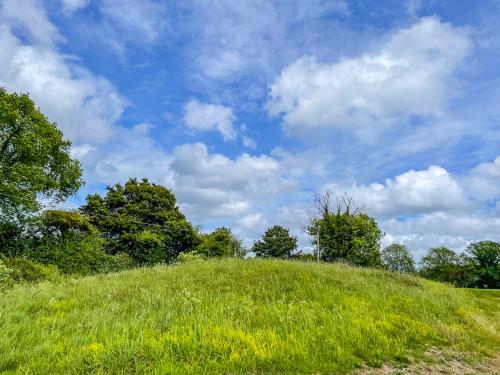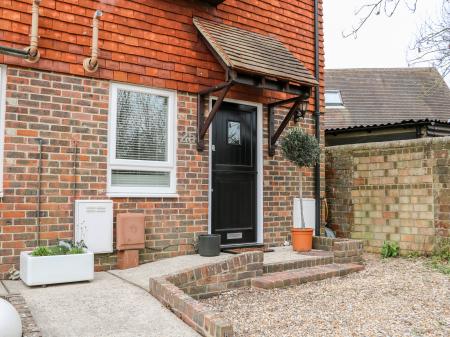
A Legendary Giant
The old tales tell that Bevis worked as a warden at Arundel Castle, where you can still find Bevis Tower. Bevis ate an ox washed down with two hogsheads of beer every week and was said to be so tall that he could walk from Southampton to the Isle of Wight without getting his head wet.
According to legend, Bevis threw his sword from the parapet of Arundel Castle to mark the spot where he should be buried. The sword landed here at Bevis's Thumb.
Alternate versions of the story say that the sword landed in Arundel Park (where you will find a barrow known as Bevis's Tomb) or near Havant (where there is a long barrow called Bevis's Grave). In Arundel Castle you can see Bevis's broadsword, which measures 5'9".
The burial mound is an elongated barrow, rather the round barrows which are generally more common in the Sussex downlands. It measures 60m long and tapers from 16m at the western end to 9m at the eastern end (which has been cut through by a farm track). It varies between 1.6 and 1.8m in height.
Excavations in 1980 found several flint tools and animal bones in the ditch that outlines the barrow. The ditch also contained charcoal which was carbon-dated to the period 2500-2700 BC. To the south-east of the long barrow are several oval barrows that may have been built at the same time.
The site has also been called Solomon's Thumb, perhaps as an attempt to Christianise an ancient pagan site. It stands beside the bridleway leading to the summit of Telegraph Hill.
Getting There
Be aware that there are no signs for the barrow and it is extremely easy to miss. That said, it is also extremely easy to get to! From the B2146 at the northern edge of Compton, take the lane signposted to the Mardens.
Travel east along the lane for one mile until you reach the bridleway heading south towards Telegraph Hill. There are small, rough laybys on both sides of the lane with room for perhaps two cars.
The long barrow stands on the south side of the lane immediately east of the bridleway. Simply walk around the vehicle gate that bars access to the bridleway and you will see the barrow to your left.
 We've 'tagged' this attraction information to help you find related historic attractions and learn more about major time periods mentioned.
We've 'tagged' this attraction information to help you find related historic attractions and learn more about major time periods mentioned.




